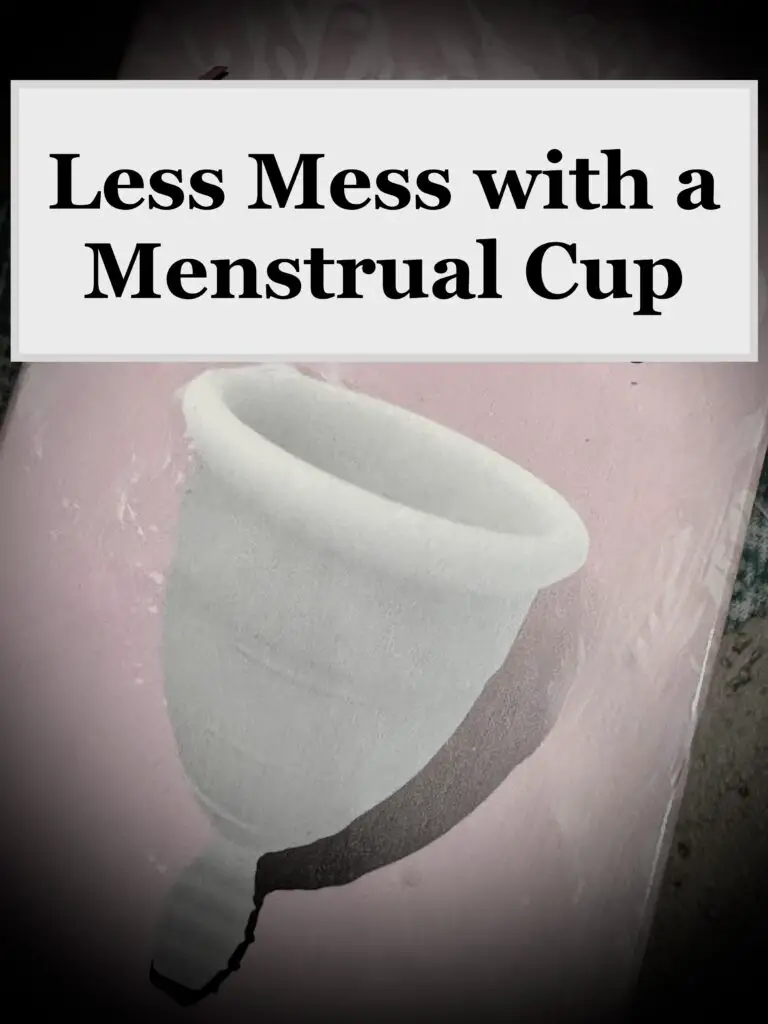Using a menstrual cup offers several environmental and economical advantages compared to traditional disposable menstrual products like pads and tampons. Here are some of the key benefits:
Environmental Advantages:
- Reduced Waste: Menstrual cups are reusable and can last for several years with proper care. This significantly reduces the amount of menstrual waste produced compared to disposable pads and tampons, which contribute to a considerable amount of non-biodegradable waste over time.
- Decreased Carbon Footprint: The production, packaging, and transportation of disposable menstrual products contribute to carbon emissions. Menstrual cups, being reusable, have a lower overall carbon footprint as they require fewer resources and less energy to manufacture.
- Conservation of Resources: Menstrual cups are typically made from medical-grade silicone, latex, or elastomer. The production of these materials generally requires fewer resources compared to the cotton and other materials used in disposable products.
- Reduced Pollution: Disposable menstrual products can contribute to pollution when they end up in landfills or waterways. Menstrual cups help reduce this form of pollution by eliminating the need for constant disposal.
- Less Packaging Waste: Menstrual cups come with minimal packaging compared to disposable alternatives. Less packaging means fewer resources used in production and less waste generated.
Economical Advantages:
- Cost-Effective: While the initial investment in a menstrual cup may be higher than a single pack of disposable products, a menstrual cup is reusable and can last for several years. Over time, this can result in significant cost savings as you won’t need to purchase disposable menstrual products on a monthly basis.
- Long-Term Savings: A high-quality menstrual cup can last for up to 10 years or more with proper care. This long lifespan means you won’t need to continually spend money on disposable products, making it a cost-effective option in the long run.
- Fewer Emergency Purchases: With a menstrual cup, you won’t find yourself running out of supplies and having to make emergency purchases. This can be especially beneficial in situations where access to menstrual products may be limited.
- Less Impact on Household Budget: Menstrual cups provide a one-time expense, making it easier for individuals to budget for their menstrual care without the recurring monthly cost associated with disposable products.
- Potential Health Care Savings: Some individuals may experience fewer menstrual-related health issues, such as irritation and infections, when using a menstrual cup. This can potentially lead to fewer associated healthcare costs.
- Fewer Product Changes: A menstrual cup can hold more liquid than tampons and pads resulting in less time spent changing products and fewer trips to the bathroom. This can mean less disruptions throughout the day and better productivity.
Amazing Menstrual Cups:
These menstrual cups earned their excellent reviews. NOTE: Menstrual Cups come in at least 2 different sizes. Please make sure to order the correct size for you. This section Incudes affiliated links to highly reviewed products.
- EcoBlossom Reusable Menstrual Cup Set – The Most Reliable Medical Grade Silicone Period Cups – Comfortably use for 12 Hours (2 Large Cups): Based in the USA and made with 100% medical-grade silicone. This cup is naturally hypoallergenic, non-toxic, BPA and latex free. Unlike tampons, our cups won’t disrupt your pH or cause dryness. These feminine hygiene cups offer 12 hours of reliable leak-proof protection and last up to 10 year.
- 2 Pixie Menstrual Cups 100% Medical-Grade Silicone – Ranked 1 for The Most Soft Reusable Period Cup – Wear 12 Hours: Holding the capacity of 3+ super tampons, you can wear Pixie Cups for 12 hours before emptying. Free from metals, BPA, PFAS, latex, phthalates, and toxins, you can wear the cup that is incredibly comfortable and unquestionably reliable. Run, sleep, swim, and dance on your period without fear of leaks, tampon pain, or pad irritation. Plus, it lasts for 10 years, meaning more money in your pocket and less plastic in landfills! Every time you purchase a Pixie Cup, a cup is donated to a woman in need. They’ve donated 274,000+ Pixie Cups so far!
- DIVA Cup & Pin – Medical Grade Silicone Cup for Period Care – Reusable Menstrual Cup – Up to 12 Hours of Continuous Wear: DIVA cups come in 3 different Models (sizes), so you can find the perfect fit for you! Cup includes leak-resistant air holes for a secure seal and visible flow lines for easy tracking, so you can know your flow. DivaCup is the most trusted name in the period care category, as they started over 20 years ago.
- Saalt Soft Menstrual Cup – Best Sensitive Reusable Period Cup: Made with an ultra-soft silicone formula designed to be both gentle and super comfortable for those with bladder sensitivity, cramping or discomfort with firmer cups. The Saalt Soft was designed in collaboration with the cup experts at Put A Cup In It, who have helped over a million menstruators find their perfect menstrual cup. Made in the USA with 100% medical-grade silicone, the Saalt Cup is affordable premium period care. The chemical free formula is naturally hypoallergenic, non-toxic and BPA and latex free. Unlike tampons it maintains your unique pH and will never dry you out, leave fibrous residue or cause micro tearing and risk infection and TSS.
- Dutchess Menstrual Cup – Reusable, Soft, Medical-Grade Silicone Period Cups – Easy to Clean Tampon and Pad Alternative, Pink & Purple, Small, Pack of 2: This is the most affordable option at around $10. It can cost less than one pack of tampons or pads and starts saving you money in the first month of use while also helping the environment. Made from soft, medical-grade silicone, these menstruation cups are phthalate, latex, dioxin, & BPA-free. Comes in two sizes. Leak-free and easy to clean, these reusable period cups for women with heavy flow also come with a cute bonus hygiene pouch for easy transport.
Other Amazing Advantages to a Menstrual Cup:
- Long-lasting protection: Menstrual cups have a higher capacity than most pads and tampons, which means they can be worn for longer periods without needing to be emptied or changed as frequently. This can be particularly convenient for individuals with heavy menstrual flow or those who have limited access to restroom facilities throughout the day.
- Healthier option: Menstrual cups are typically made from medical-grade silicone or latex, which are safe materials that don’t contain harmful chemicals or additives. Unlike tampons, which can absorb natural vaginal moisture along with menstrual blood, menstrual cups collect blood without drying out the vaginal canal. This can help maintain the natural pH balance of the vagina and reduce the risk of irritation or infection.
- Comfort and flexibility: Once inserted properly, menstrual cups are often more comfortable to wear than pads or tampons. They’re flexible and conform to the shape of the vaginal canal, allowing for greater freedom of movement during physical activities like exercising, swimming, or sleeping. Additionally, menstrual cups don’t cause the same sensation of “bulkiness” that some individuals may experience with pads or discomfort associated with tampon insertion and removal.
- Convenience and discretion: Menstrual cups can be worn for up to 12 hours at a time, depending on the individual’s flow. This means fewer trips to the restroom and less disruption to daily activities. Additionally, because menstrual cups collect blood rather than absorbing it, there’s typically less odor compared to pads or tampons.
- No more Trips to the Store: This is my personal favorite advantage! With a menstrual cups, there’s no need for rushed or embarrassing trips to the store to buy feminine products. You always have everything you need in one small, one time purchase.
Overall, using a menstrual cup can be both environmentally friendly and economically advantageous. While the decision to switch to a menstrual cup is a very personal one, many individuals find the combination of reduced environmental impact and long-term cost savings makes it a tremendous choice.
Cleaning:
Proper cleaning and care of your menstrual cup are essential for maintaining its hygiene, longevity, and effectiveness. Here are some best practices for cleaning and caring for your menstrual cup:
- Before First Use:
- Sterilize your menstrual cup by boiling it in water for 5-10 minutes. Ensure the cup is fully submerged and not touching the bottom or sides of the pot to avoid damage.
- During Menstrual Cycle:
- Wash your hands thoroughly with soap and water before handling your menstrual cup.
- It is best to empty your menstrual cup in a bathroom with a sink close by (within reach of the toilet), so you can rinse it without any drips or messes on the floor.
- Empty your menstrual cup at least every 8-12 hours. If you have a very heavy flow, you may need to empty it more often as needed based on your personal flow.
- Avoid leaks, spills, and slips by emptying your cup more often. You never want your menstrual cup to fill up so much you can feel it starting to slip out!
- Empty the cup into the toilet, and then rinse the cup with warm water to remove blood and debris.
- If water is not available, wipe the cup with tissue, menstrual cup wipe, or toilet paper before reinserting.
- Avoid using harsh soaps, fragrances, or douches, as they can disrupt the natural pH balance of your vagina.
- Between Cycles:
- At the end of your menstrual cycle, sterilize your menstrual cup by boiling it in water for 5-10 minutes.
- Ensure the cup is completely dry before storing it away.
Care:
- Storage:
- Store your menstrual cup in a breathable cotton pouch or ventilated container when not in use.
- Avoid storing your menstrual cup in an airtight container or plastic bag, as this can trap moisture and promote bacterial growth.
- Avoid Damaging:
- Be gentle when handling your menstrual cup to avoid tears, punctures, or damage to the silicone.
- Avoid using sharp objects, such as fingernails or scissors, to remove your menstrual cup.
- Replace When Necessary:
- Inspect your menstrual cup regularly for signs of wear and tear, such as discoloration, odor, or loss of elasticity.
- Replace your menstrual cup as recommended by the manufacturer, typically every 1-2 years or as needed.
- Consider Backup:
- If you’re concerned about leaks or accidents, consider having a backup method. Carry an extra menstrual cup with you just incase, and you may want consider other feminine products such as a panty liner or period underwear, especially during heavy flow days or overnight.
By following these cleaning and care guidelines, you can ensure that your menstrual cup remains clean, hygienic, and in good condition for long-term use. Proper maintenance will also help minimize the risk of irritation, infection, or other issues associated with menstrual cup use.
DIFER.ORG is Committed to Reducing Waste




